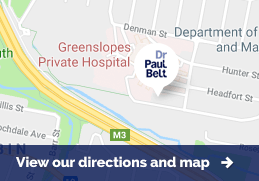The Procedure
Body contouring after massive weight loss or bariatric surgery.
Patients who have lost massive amounts of weight, either as a result of dieting or bariatric surgery (gastric banding or gastric sleeve), may have enormous amounts and folds of redundant skin.
Once the skin has been stretched beyond a certain limit - it will be irreversibly damaged. This is when stretch marks appear. After this the elastic recoil of the skin is reduced such that it will not redrape with loss of weight.
People who have lost massive amounts for weight may require ;
- Abdominoplasty or apronectomy
- Breast reduction or mastopexy
- Breast augmentation
- Arm reduction
- Back / buttock lift including buttock augmentation
- Thigh lifts
- Belt or circumferential lipectomy
- Bra/Back lift
Thigh lifts
The excessive floppy tissue which remains after massive weight loss in the inner thighs can be removed with a thigh lift. This tissue will create a fullness in clothing, and may become excoriated with certain activities. Rashes may develop in this area, particularly in the summer months.
The excess skin can be tightened with a procedure which places either a horizontal or a vertical incision in the inner thigh. A precise amount of fat and skin is then excised. The adjacent skin is undermined and re draped. This restores a normal tone to the skin in this area.
“Belt” or circumferential lipectomy
People who have been successful in losing a massive amount of weight are often left disappointed with the apron of excessive skin which remains around their waists. This tissue can be both on the front as well as around the back.
The “belt” or circumferential lipectomy can remove all of this excessive tissue, both front and back. The first part of the operation is essentially the same as an abdominoplasty.
After the abdominoplasty is completed, the attention is turned to the back. The second part of the procedure can follow immediately, or can be performed at a later date as a staged operation.
The patient is turned onto their front and the ends of the original wound (on the front) are extended so that the final wound runs around the entire body. The skin edges are undermined and the skin is redraped after a suitably sized wedge of skin and fat is excised.
The post operative course is similar to that described for the abdominoplasty.
Useful link: Dr Phil Lockie at the Brisbane Institute of Obesity Surgery
Apronectomy
In some situations an abdominoplasty may not be appropriate and an alternative procedure is an apronectomy.
This procedure is the simple removal of the excess abdominal skin which forms the overhanging abdominal apron. The surgery involves less undermining of the anterior abdominal wall. Classically the umbilicus is not moved. The simple excess skin and subcutaneous fat from the abdominal apron is removed and the wound is closed.
This generates less potential dead space and therefore less potential collections of serious fluid (seroma) or blood (haematoma). This is a good operation for patients who have lost a significant amount of weight but whose Body Mass Index (BMI) is still elevated above the normal range (18.5 – 25).
Dr. Belt is happy to assess you and advise you which procedure would be ideal for you.
From 1st January 2016 Medicare has imposed restrictions on the use of the item number for lipectomy procedures. In order to qualify under the new Medicare guidelines it is important that patients fulfil the following criteria:
- There is intertrigo (severe rashes and skin ulceration) or another skin condition that risks loss of skin integrity and has failed three months of conventional (non-surgical) treatment
- The excess skin interferes with the activities of daily living
- The weight loss is equivalent to a loss of 5 BMI (body mass index) points which has been stable for at least six months

Complications and Risks
All Procedures have potential complications and risks. These can be divided into general complications and those specific to each procedure. The latter are listed in the FAQs below.
General complications include:
- Wound complications - bleeding, bruising, collections under the skin of blood (haematoma), pus (abscess), serous fluid (seroma), infection, wound breakdown, suture extrusion, sensory loss;
- Aesthetic complications - poor scars, stretched scars, raised scars (keloid or hypertrophic), contour irregularities, need for revisional procedure;
- Anaesthetic complications














